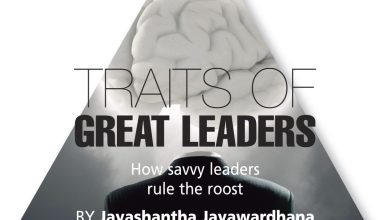LEADERSHIP MANTRA
PLAYING AN INFINITE GAME
Pallavi Pinakin explains how infinity games can help streamline vision
Finite games are well known to all of us. Be it Scrabble, Monopoly or basketball, the structure remains the same: there are two or more opposing teams, a set of rules to follow and a clear goal to achieve. There is also a declared winner and loser.
 In infinite games however, there’s no fixed marking system. The rules change often, the goalposts keep shifting and your opponents may not stay the same. You can’t truly win or lose an infinite game; you can only be ahead or behind – and that too only temporarily.
In infinite games however, there’s no fixed marking system. The rules change often, the goalposts keep shifting and your opponents may not stay the same. You can’t truly win or lose an infinite game; you can only be ahead or behind – and that too only temporarily.
The purpose of a finite game to is to win and end the game. But the objective of an infinite game is to keep playing even though the contest doesn’t have a conclusion. In fact, you may not even know when it started! Finite games can be played within an infinite game but never vice versa.
Infinite games exist all around us – in politics, economics and even war. How did North Vietnam lose all battles but win the final war against the US?
Simple: while the Americans looked at finite victories and short-term gains, the Vietnamese played to stay in the game… the goal was simply to outlast America!
Author of The Infinite Game Simon Sinek explains that the business world tends to suffer from the same shortsightedness and focus on limited goals such as profit or promotion, which eventually leads to stagnation in performance and team morale.
Conversely, leaders who adopt an infinite mindset tend to flourish because they welcome challenges, build resilience and pioneer innovation.
They contemplate a cause that’s larger than themselves and their tenure, and aim to create a robust culture that will remain long after they’re gone. Infinite thinkers who truly play the long game are the ones who ultimately bring about the most revolutionary changes.
According to Sinek, leaders looking to develop an infinite mindset must focus on the following keystones.
JUST CAUSE In contrast to finite goals such as profitability and growth, a just cause is defined as a noble vision that lasts into the future and becomes a legacy. A just cause is for something rather than against it, an affirmative purpose that consistently inspires. It must be inclusive of not only the most effective workers but all members of society who would like to contribute.
In addition, the cause must be service oriented – meaning that the primary benefit should reach employees and customers before it reaches the leader. It can’t be buffeted around by the latest trends, and must be resilient to political, economic and technological changes.
Lastly, a just cause needs to be truly idealistic – i.e. the pursuit of something grand but ultimately unattainable, a vision to constantly strive for.
FLEXIBILITY Many organisations pursue a variable cause with a fixed strategy rather than the other way round. Instead, lead-
ers should adopt the existential flexibility model, which is the ability to overcome a hurdle by incorporating it into your corporate strategy and advancing your just cause.
Take the example of a Tokyo-based kimono company established in the 17th century. Grappling with diminishing demand for traditional clothes, its leadership took a bold step and began producing carbon fibre to produce modern garments. This proves that innovative companies can weather a storm and also be transformed by it.
COURAGE Infinite leaders must stand up to protect their just cause from all threats – market fluctuations, fickle consumer sentiment or coercion from stakeholders. Of course, this is easier said than done as all existing business paradigms are aligned to a finite mindset and the pressure to conform is enormous.
Given the many hurdles a leader faces while trying to stay the infinite course, Sinek feels that a CEO should be a CVO – a Chief Vision Officer.
TRUSTING TEAM In today’s corporate culture, fear of punishment often drives people to cover up their mistakes. Employees tend to protect their own interests even at the cost of the organisation. Therefore, it’s imperative to develop a culture of trust and vulnerability, whereby people can take risks and fail without fear of retribution or mockery.
Infinite players should also adopt an open playbook. Rather than keeping important information to themselves in a bid to maintain control, leaders must learn to be transparent with their goals and strategies so that the team can make well-informed decisions.
WORTHY RIVALS ‘Adversary’ isn’t a negative word for an infinite player who realises that true competition isn’t against business opponents but rather, previous versions of themselves.
Instead, we should welcome a worthy rival as someone who pushes us to constantly improve, helps us discover our weaknesses and inspires us to stay in the game, ultimately making us better players.





